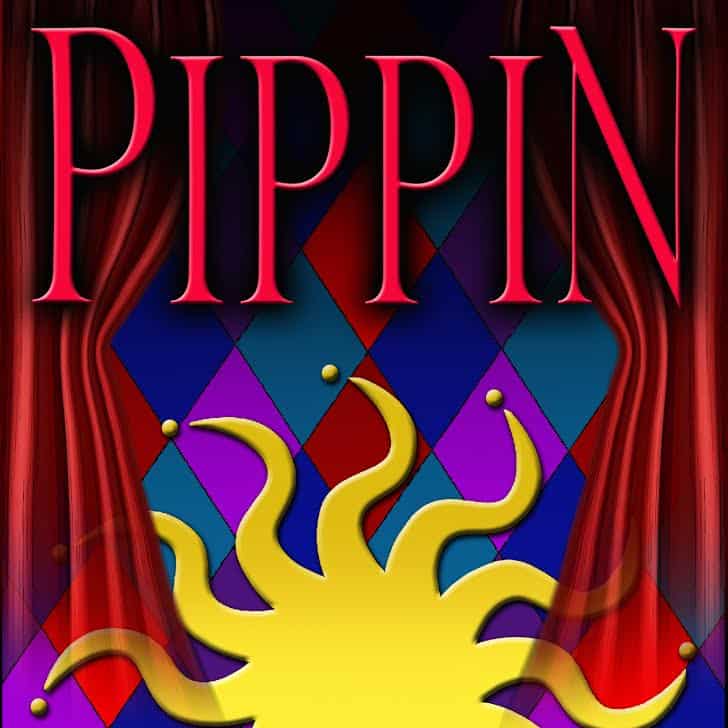Blog
This close-up Hubble view of the Meathook Galaxy (NGC 2442) focuses on the more compact of its two asymmetric spiral arms as well as the central regions. The spiral arm was the location of a supernova that exploded in 1999. These observations were made in 2006 in order to study the aftermath of this supernova. Ground-based data from MPG/ESO 2.2-metre telescope were used to fill out parts of the edges of this image.
NGC 2442 and NGC 2443 are two parts of a single intermediate spiral galaxy, commonly known as the Meathook Galaxy. It is about 50 million light-years away in the constellation Volans, and was discovered by Sir John Herschel on December 23, 1834. Associated with this galaxy is HIPASS J0731-69, a cloud of gas devoid of any stars. It is likely that the cloud was torn loose from NGC 2442 by a companion.
Gaia16cfr was a supernova imposter that occurred in NGC 2442 on 1 December 2016. It reached a Gaia apparent magnitude of 19.3 and absolute magnitude of about −12.
more...
Kenneth David “Kenny” Kirkland (September 28, 1955 – November 12, 1998) was an American pianist/keyboardist.
Born in Brooklyn, New York in 1955, Kirkland was six when he first sat down at a piano keyboard. After years of Catholic schooling, Kirkland enrolled at the Manhattan School of Music, where he studied classical piano performance, classical theory and composition. Kirkland’s first professional work came with Polish fusion violinist Michal Urbaniak, touring throughout Europe with his group in 1977. Coincidentally, his next high-profile gig was with another Eastern European jazz émigré, Miroslav Vitous. Kirkland is featured on Vitous’ ECM recordings First Meeting and Miroslav Vitous Group.
In 1980, while Kirkland was on tour in Japan with Hino, he met Wynton Marsalis, which began their long association. On Marsalis’s self-titled debut album, Kirkland shared the piano duties with one of his musical influences, Herbie Hancock, but was the sole pianist on Marsalis’s subsequent releases Think of One, Hothouse Flowers and Black Codes. After his association with Wynton Marsalis, Kirkland joined Branford Marsalis’s band.He is also on Marsalis’s funk band album Buckshot Lefonque. When Branford Marsalis assumed the high-visibility role of bandleader for NBC TV’s The Tonight Show with Jay Leno, Kirkland became the band’s pianist.
In 1991, he released his debut as a leader, Kenny Kirkland, on GRP Records. Thunder And Rainbows (1991, Sunnyside Records), by “Jazz from Keystone”, is a trio album with Kirkland, Charles Fambrough, and Jeff “Tain” Watts.
more...Víctor Lidio Jara Martínez (Spanish pronunciation: [ˈβiktoɾ ˈliðjo ˈxaɾa maɾˈtines]; 28 September 1932 – 16 September 1973) was a Chilean teacher, theater director, poet, singer-songwriter and communist political activist tortured and killed during the dictatorship of Augusto Pinochet. He developed Chilean theater by directing a broad array of works, ranging from locally produced plays to world classics, as well as the experimental work of playwrights such as Ann Jellicoe. He also played a pivotal role among neo-folkloric musicians who established the Nueva Canción Chilena (New Chilean Song) movement. This led to an uprising of new sounds in popular music during the administration of President Salvador Allende.
Jara was arrested shortly after the Chilean coup of 11 September 1973, which overthrew Allende. He was tortured during interrogations and ultimately shot dead, and his body was thrown out on the street of a shantytown in Santiago. The contrast between the themes of his songs—which focused on love, peace, and social justice—and the brutal way in which he was murdered transformed Jara into a “potent symbol of struggle for human rights and justice” for those killed during the Pinochet regime. His preponderant role as an open admirer and propagandist for Che Guevara and Allende’s government, under which he served as a cultural ambassador through the late 60’s and until the early 70’s crisis that ended in Allende’s Coup, marked him for death.
In June 2016, a Florida jury found former Chilean Army officer Pedro Barrientos liable for Jara’s murder. In July 2018, eight retired Chilean military officers were sentenced to 18 years and a day in prison for Jara’s murder.
https://www.youtube.com/watch?v=aD-o5UqH6z0
more...John Gilmore (September 28, 1931 – August 20, 1995) was an avant-garde jazz saxophonist known for his tenure with keyboardist/bandleader Sun Ra from the 1950s to the 1990s.
Gilmore grew up in Chicago and played clarinet from the age of 14. He took up the tenor saxophone while serving in the United States Air Forcefrom 1948 to 1952, then pursued a musical career, playing briefly with pianist Earl Hines before encountering Sun Ra in 1953.
For the next four decades, Gilmore recorded and performed almost exclusively with Sun Ra. This was puzzling to some, who noted Gilmore’s talent, and thought he could be a major star like John Coltrane or Sonny Rollins. Despite being five years older than Gilmore, Coltrane was impressed with his playing, and took informal lessons from Gilmore in the late 1950s. Coltrane’s epochal, proto–free jazz “Chasin’ the Trane” was inspired partly by Gilmore’s sound.
In 1957 he co-led with Clifford Jordan a Blue Note session which resulted in the album Blowing in from Chicago. The rhythm section featured Horace Silver, Curly Russell, and Art Blakey. In the mid-1960s, Gilmore toured with the Jazz Messengers and he participated in recording sessions with Paul Bley, Andrew Hill (Andrew!!! and Compulsion), Pete La Roca (Turkish Women at the Bath), McCoy Tyner (Today and Tomorrow) and a handful of others. In 1970 he co-led a recording with Jamaican trumpeter Dizzy Reece. His main focus throughout, however, remained with the Sun Ra Arkestra.
more...Koko Taylor (born Cora Anna Walton, September 28, 1928 – June 3, 2009) was an American singer whose style encompassed Chicago blues, electric blues, rhythm and blues and soul blues. Sometimes called “The Queen of the Blues”, she was known for her rough, powerful vocals.
Born on a farm near Memphis, Tennessee, Taylor was the daughter of a sharecropper. She left Tennessee for Chicago in 1952 with her husband, Robert “Pops” Taylor, a truck driver. In the late 1950s, she began singing in blues clubs in Chicago. She was spotted by Willie Dixon in 1962, and this led to more opportunities for performing and her first recordings. In 1963 she had a single on USA Records, and in 1964 a cut on a Chicago blues collection on Spivey Records, called Chicago Blues. In 1964 Dixon brought Taylor to Checker Records, a subsidiary label of Chess Records, for which she recorded “Wang Dang Doodle“, a song written by Dixon and recorded by Howlin’ Wolf five years earlier. The record became a hit, reaching number four on the R&B chart and number 58 on the pop chart in 1966, and selling a million copies. She recorded several versions of the song over the years, including a live rendition at the 1967 American Folk Blues Festival, with the harmonica player Little Walter and the guitarist Hound Dog Taylor. Her subsequent recordings, both original songs and covers, did not achieve as much success on the charts.
more...NGC 1433 is a barred spiral galaxy with a double ring structure located in the constellation of Horologium. It is at a distance of 30 million light years from Earth. It has an active galactic nuclei, and NGC 1433 is a Seyfert galaxy that’s also known as PGC 13586 which is named Miltron’s Galaxy. The central region of the galaxy portraits intense star formation activity, with an irregular star-forming ring of 5″ (or 0.3 kpc) radius and weak radio wave emission. Star formation is also noticeable in the spiral arms but not the bar of the galaxy. NGC 1433 is being studied as part of a survey of 50 nearby galaxies known as the Legacy ExtraGalactic UV Survey (LEGUS). A jet of material flowing away from the central black hole of the galaxy extending for only 150 light-years has been found. It is the smallest molecular outflow ever observed in a galaxy beyond our own.
NGC 1433 was discovered by James Dunlop in 1826. One supernova has been observed in NGC 1433, SN 1985 P, type II with apparent magnitude 13.5 at discovery, on 10 October 1985. Distance 32 Mly
more...Robert Roland Chudnick (September 27, 1927 – May 27, 1994), known professionally as Red Rodney, was an American jazz trumpeter. Born in Philadelphia, Pennsylvania, he became a professional musician at 15, working in the mid-1940s for the big bands of Jerry Wald, Jimmy Dorsey, Georgie Auld, Elliot Lawrence, Benny Goodman, and Les Brown. He was inspired by hearing Dizzy Gillespie and Charlie Parker to change his style to bebop, moving on to play with Claude Thornhill, Gene Krupa, and Woody Herman.
He accepted an invitation from Charlie Parker to join his quintet. and was a member of the band from 1949–1951. Being the only white member of the group, when playing in the southern United States he was billed as “Albino Red” as a ruse to avoid prejudice against mixed race musical combos. During this time he recorded extensively.
During the 1950s, he worked as a bandleader in Philadelphia and recorded with Ira Sullivan. He became addicted to heroin and started a pattern of dropping in and out of jazz.
During 1969, Rodney played in Las Vegas with fellow Woody Herman colleague, trombonist Bill Harris, as part of the Flamingo casino house band led by Russ Black. Similar work continued through 1972.
In the early 1970s he was bankrupted by medical costs following a stroke. He returned to jazz. In 1975 he was incarcerated in Sandstone, Minnesota for drug offenses. While jailed he gave music lessons to guitarist Wayne Kramer of the MC5.
He reunited with Ira Sullivan and performed with Dizzy Gillespie. From 1980 to 1982, Rodney made five albums with Sullivan. On these albums he started to play post bop jazz. He continued to work and record into the 1990s. He performed on a Charlie Parker tribute album by Charlie Watts, drummer for the Rolling Stones. He provided an early showcase for saxophonist Chris Potter, who was a member of his group and only 19 years old when Rodney recorded Red Alert in late 1990.
He performed at Jazz at Lincoln Center and the JVC Jazz Festival. He worked as an adviser for Bird, a movie about Charlie Parker directed by Clint Eastwood. Michael Zelniker played him in the movie.
https://www.youtube.com/watch?v=62MmaYsgjWU
Rodney died on May 27, 1994, from lung cancer
more...Earl Rudolph “Bud” Powell (September 27, 1924 – July 31, 1966) was an American jazz pianist. Though Thelonious Monk was a close friend and influence, his greatest piano influence was Art Tatum.
Along with Charlie Parker, Monk, and Dizzy Gillespie, Powell was a leading figure in the development of modern jazz, or bebop. His virtuosity led many to call him the Charlie Parker of the piano. Powell was also a composer, and many jazz critics credit his works and his playing as having “greatly extended the range of jazz harmony.”
In his youth Powell listened to the adventurous performances at Uptown House, a venue near his home. This was where Charlie Parker first appeared as a solo act when he briefly lived in New York. Thelonious Monk played at Uptown House. When Monk met Powell he introduced Powell to musicians who were starting to play bebop at Minton’s Playhouse. Monk was a resident pianist, and he presented Powell as his protégé. Their mutual affection grew, and Monk became Powell’s greatest mentor. Powell eagerly experimented with Monk’s idea. Monk’s composition “In Walked Bud” is a tribute to their time together in Harlem. Powell was engaged in a series of dance bands, his incubation culminating in becoming the pianist for the swing orchestra of Cootie Williams. In late 1943 he was offered the chance to appear at a nightclub with the quintet of Oscar Pettiford and Dizzy Gillespie, but Powell’s mother decided he would continue with the more secure job with the popular Williams.
https://www.youtube.com/watch?v=YOzNn3Q51PM
more...Flamenco Fridays featuring Algerias.
Alegrías (Spanish pronunciation: [aleˈɣɾi.as]) is a flamenco palo or musical form, which has a rhythm consisting of 12 beats. It is similar to Soleares. Its beat emphasis is as follows: 1 2 [3] 4 5 [6] 7 [8]9 [10] 11 [12]. Alegrías originated in Cádiz. Alegrías belongs to the group of palos called Cantiñas and it is usually played in a lively rhythm (120-170 beats per minute). The livelier speeds are chosen for dancing, while quieter rhythms are preferred for the song alone.
One of the structurally strictest forms of flamenco, a traditional dance in alegrías must contain each of the following sections: a salida (entrance), paseo (walkaround), silencio (similar to an adagio in ballet), castellana (upbeat section) zapateado (Literally “a tap of the foot”) and bulerías. This structure though, is not followed when alegrías are sung as a standalone song (with no dancing). In that case, the stanzas are combined freely, sometimes together with other types of cantiñas.
https://www.youtube.com/watch?v=uh15x-4BUts
more...
NGC 6193 is open cluster containing 27 stars in the constellation Ara, visible to the unaided eye. NGC 6193 lies at the center of the Ara OB1 association, which extends over a square degree. The cluster is associated with (and provides the energizing radiation for) neighboring regions of the nebulosity NGC 6188. Distance 3765.3 ly
more...ictor E. Jurusz Jr., known professionally as Vic Juris (born September 26, 1953) is an American jazz guitarist. Juris was born in Jersey City, New Jersey, but he moved with his family to Parsippany early in his life. In 1963, at the age of 10, he began learning guitar.[2] At 11, he studied guitar at the home of his teacher, Ed Berg, and got interested in jazz listening to Berg’s records of guitarists Django Reinhardt, Jim Hall, Barney Kessel, Jimmy Raney, and Johnny Smith. When asked about albums that made an impact on him as a kid, Juris cites Rubber Soul by The Beatles, The Dynamic Duoby Wes Montgomery and Jimmy Smith, Larry Coryell‘s debut album, and Are You Experienced by Jimi Hendrix. In his teens he played the rock music of the 1960s. When he was 19, he met blind saxophonist Eric Kloss and they became friends. He made his first recording on Kloss’s album Bodies’ Warmth (Muse, 1975). Around the same time, he met guitarist Pat Martino, who became a friend and mentor.
Juris recorded with Richie Cole during 1976–78 and released his debut album as a leader, Road Song, in 1979. In the early 1980s, he turned to acoustic guitar in duos with Larry Coryell and Biréli Lagrène, and in the late 1980’s he worked with Gary Peacock‘s band. Since 1991 he has spent much of his career with saxophonist David Liebman.
During the 1990s, he worked as sideman with Lee Konitz and Peggy Stern (1992), Benny Waters (1993), Jeanie Bryson (1993–94), Gary Peacock (since 1994), Steve LaSpina (since 1995), Judi Silvano (1996), Ken Serio (1996, 2007) and Joe Locke (1998).
https://www.youtube.com/watch?v=IKsWt62swqc
more...Gary Bartz (born September 26, 1940) is an American jazz saxophonist. Bartz studied at the Juilliard Conservatory of Music. In the early 1960s, he performed with Eric Dolphy and McCoy Tyner in Charles Mingus‘s Jazz Workshop. He worked as a sideman with Max Roach and Abbey Lincoln before joining Art Blakey and the Jazz Messengers. In 1968 he was a member of McCoy Tyner’s band Expansions.
In mid-1970 he joined Miles Davis‘s band, performing live at the Isle Of Wight festival in August, and at a series of December dates at The Cellar Doorclub in Washington, D.C. Portions of these shows were initially released on the 1971 Live-Evil album, with the entire six performance/four night run eventually released in full on the 2005 Cellar Door Sessions box set.
He later formed the band Ntu Troop, which combined jazz, funk, and soul.
Bartz was awarded the BNY Mellon Jazz 2015 Living Legacy Award, presented at a special ceremony at The Kennedy Center.
In the liner notes to the album The Red and Orange Poems, jazz critic Stanley Crouch called Bartz “one of the very best who has ever picked up the instrument”.
https://www.youtube.com/watch?v=sKeZ6nvabvI
more...George Gershwin (/ˈɡɜːrʃ.wɪn/; born Jacob Bruskin Gershowitz, September 26, 1898 – July 11, 1937) was an American composer and pianist[1][2]whose compositions spanned both popular and classical genres. Among his best-known works are the orchestral compositions Rhapsody in Blue(1924) and An American in Paris (1928), the songs Swanee (1919) and Fascinating Rhythm (1924), the jazz standard I Got Rhythm (1930), and the opera Porgy and Bess (1935) which spawned the hit Summertime.
Gershwin studied piano under Charles Hambitzer and composition with Rubin Goldmark, Henry Cowell, and Joseph Brody. He began his career as a song plugger but soon started composing Broadway theater works with Buddy DeSylva and his brother Ira Gershwin. He moved to Paris intending to study with Nadia Boulanger, but she refused him; he subsequently composed An American in Paris. He then returned to New York City and wrote Porgy and Bess with Ira and DuBose Heyward. It was initially a commercial failure but came to be considered one of the most important American operas of the twentieth century and an American cultural classic.
Gershwin moved to Hollywood and composed numerous film scores until his death in 1937 from a malignant brain tumor.[3] His compositions have been adapted for use in films and television, and several became jazz standards recorded and covered in many variations.
more...https://www.youtube.com/watch?v=5SsVOybrFyE
more...The Pelican Nebula is slowly being transformed. IC 5070, the official designation, is divided from the larger North America Nebula by a molecular cloud filled with dark dust. The Pelican, however, receives much study because it is a particularly active mix of star formation and evolving gas clouds. The featured picture was produced in three specific colors — light emitted by sulfur, hydrogen, and oxygen — that can help us to better understand these interactions. The light from young energetic stars is slowly transforming the cold gas to hot gas, with the advancing boundary between the two, known as an ionization front, visible in bright orange on the right. Particularly dense tentacles of cold gas remain. Millions of years from now this nebula might no longer be known as the Pelican, as the balance and placement of stars and gas will surely leave something that appears completely different. Distance 1,800 ly
more...More Posts
- Fela Aníkúlápó Kútì
- Freddie Cole
- Mickey Baker
- World Music Trio Mandili
- Daily Roots Prince Jazz
- Cosmos Ring of Fire Eclipse
- Marcia Barrett
- Kenny Neal
- Babe Stovall
- Robert Parker
- James Son Thomas
- World Music Andalucious
- Daily Roots Dillinger
- Happy Friday the 13th 2023
- Cosmos M33
- Pau Simon
- Pharoah Sanders
- Ray Brown
- Art Tatum
- Flamenco Fridays Farruca con Sabicas




